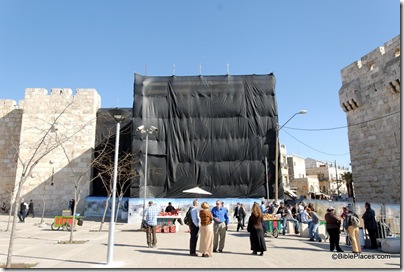Officers from the Israel Antiquities Authority arrested four antiquities thieves illegally excavating a site near Moshav Zecharya in the Shephelah. They were charged with crimes that bring up to five-year prison sentences. From the Jerusalem Post:
“Me and my men noticed a vehicle parked near the site close to Moshav Zecharya. Over the last few months we have discovered holes in the ground left by potential robbers on the site, so we had reasons to believe that the vehicle belonged to them. We snuck up to the site and saw the men digging a deep hole near one of the ancient walls. When we saw what they were doing we immediately arrested the perpetrators and called the border police unit to take them away to the police station, where they spent the night before seeing a judge the next morning,” said Ganor.
[…]
Ganor said that the alleged robbers, like everyone involved in the trade of archeological artifacts, were looking to get rich from their findings. “Where archeologists see history, robbers see dollar signs. The hope of finding valuables, be they ancient coins, jewelry or even pottery, is what drives them to destroy centuries of history.”
According to Ganor, every year 150 robbers are caught in the act of digging up archeological sites. Of these, 85 percent are charged and convicted. Ganor said that the Antiquities Authority knows of 300 archeological sites that are dug up every year and estimates that there are probably 300 more that they don’t know of.
“Israel has more than 30,000 archeological sites. Many of them have stories or legends about buried treasure hidden within them. Dreams of ancient riches are what drive the robbers to commit the crimes,” said Ganor.
“The robbers are very familiar with the land, often more than us. They know where the sites are and know where to look for valuables. Sometimes they also dig up graves in search of objects that were buried alongside the deceased.”
Ganor said it was impossible to profile the average robber. “Unfortunately it is a problem that exists in all segments of the population. There are Jews, Arabs, Palestinians, even foreign nationals – all share the dream of digging up the find that will make them rich.”

